
‘When most people say “movie,” they usually have something very specific in mind. A “short” or a “documentary”, in such a line of thinking, are not “movies”, because a movie can only be a fictional feature-length film. Likewise, when one says “cinema”, one thinks of the venue where we go to watch movies with a box of popcorn in our lap. And, if we had to turn those words (movie, cinema) into a graphic cliché, we would have the silhouette of a cinema camera, a director’s chair (one of those folding ones with a canvas seat and back), a film can or a strip of celluloid with its perforations. All of this leads us to a fossilized idea of industrial cinema, and to Hollywood’s ways of doing things, which in turn are also propagated through books and treatises that show us standardized, univocal ways of writing a script, of planning a scene with its axes and match cuts, set lighting, etc.
‘In a way, Morgan Fisher (Washington DC, 1942) is the missing link between that Hollywood idea of films and experimental cinema, thanks to a series of works that intelligently break down the conventions of industrial cinema with humour, in a line of conceptual thought that smacks of avant-garde. Most of Fisher’s films are true meta-cinema, films that say “You’re watching a movie,” and the movie you’re watching is about making a movie that has been emptied of any content other than just that.
‘Fisher’s films have been called “structural cinema” due to their material approach to cinema, but the truth is that this idea is not entirely correct, since his interest is directed more towards conventional procedures, which in the years when he began working in the late sixties inevitably involved working with celluloid, projectors, synchronization methods, cameras and other paraphernalia (which, curiously, all continues to graphically represent cinema). Each film is a carefully thought-out system, where the ultimate decisions are taken by industrial standards: the duration of the film reels, the apparatus most often used, the regulated procedures, and the predetermined categories. Fisher, who is also a painter and adapts this way of doing things to painting, has expressed his closeness to Duchamp and the ready-made, and in a certain way what he does in his cinema is to place that industrially manufactured object in front of our eyes so that what is important in the work is not the work itself but the gesture it proclaims.
‘Some of Fisher’s work focuses on his oblique look at everything behind and to the sides of Hollywood films, Fisher’s films being placed in order according to what would be the order of production for a film. One might begin with the preparatory phases of a film in The Director and His Actor Look at Footage Showing Preparations for an Unmade Film, moving on to films that allude to the filming: Production Stills is a film that consists of documenting its own filming, and Production Footage shows us how a roll of film is loaded before shooting, and how it is unloaded when it is over in a twofold play of perspectives that we recognize from the cameras filming and being filmed. The length of these films, or of their parts, is determined by the length of the reels of film, expressing Fisher’s love of standards. Editing, the next phase in producing a film, is expressed here in films such as Standard Gauge, in which Fisher traces out a kind of autobiography linked to industrial assembly procedures (a sphere in which he worked in the sixties), based on their leftovers, clippings and waste material. It is, in turn, a story of 35 mm film, the standard format in industrial cinema, narrated in a single 16 mm shot in which we literally see the strip of celluloid.
‘Finally, also alluding to editing and a certain side of commercial cinema practices, () is composed of “inserts”, close-up shots of objects and actions made to streamline the montage, and which were normally shot by assistants (residual processes that allude, again, to those sidelines and backrooms of film productions). The found footage that we saw in its materiality in Standard Gauge fills the screen here, with what was almost always conceived as filler now making up the main material of the film we are seeing.
Other of Fisher’s films delve into processes involving the technical side and which refer to operating machines in cinema. To begin with, Projection Instructions makes us aware of the existence of a projector and a projectionist thanks to a series of instructions and gestures that turn the projectionist into the protagonist. Picture and Sound Rushes deals with the sound and the usual sound recording procedures (whether synchronized or not) in the industry. Cue Rolls shows us a close-up of a film synchronizer, a device used to convey a set of instructions to the person who cuts the negative so as to assemble the final copies of a film in cinema. Phi Phenomenon alludes to operating the camera and the projector, via the foundation of cinema: the Phi phenomenon, an optical illusion of our brain that makes us perceive apparent continuous movement when there is a succession of static images. Here, it is here humorously shown with a static shot of a watch in which the minute hand is moving so slowly that we cannot really “see” that movement.
‘240x refers to a part of the projector, the Maltese cross, which causes the intermittent movement of the film drive. In this case, we see Fisher throughout the process of producing a film with this matter, breaking down and re-animating his “subject.” This idea of devices at work can be seen more obliquely in Documentary Footage, through the recorder that appears in the film along with a woman. The title, “documentary footage” returns again to self-referencing: not only does the film play with one of the canonical codes of documentaries, the interview, but it uses a continual shot to faithfully document Fisher’s premise or score so as to establish a dialogue between the machine and the performer, between the immediate past and the future, between the being and the record of it recorded.’ — Elena Duque
____
Stills




























____
Further
Morgan Fisher @ Galerie Mitterand
Morgan Fisher @ IMDB
MEDIUM SHOTS: THE FILMS OF MORGAN FISHER
After Structural Film: The Conceptual films of Morgan Fisher
Rules of Engagement: Morgan Fisher’s cinema of refusal and reflexivity
Morgan Fisher @ Wikipedia
Morgan Fisher @ Bortolami
Book: Morgan Fisher ‘Off-Screen Cinema’
Book: ‘Morgan Fisher: Conversations’
MORGAN FISHER PRESENTS
Morgan Fisher @ MUBI
MORGAN FISHER. YOU ARE WATCHING A MOVIE
Morgan Fisher @ Letterboxd
Morgan Fisher: Films and Paintings and In Between and Nearby
MORGAN FISHER INTERVIEW BY NIKOLA DIETRICH
Morgan Fisher Films @ Diagonal Thoughts
Morgan Fisher: the man who wasn’t there
Aram Moshayedi on Morgan Fisher’s ‘Phi Phenomenon’
Morgan Fisher Morgan Fisher
The Parenthesis and the Standard: On a Film by Morgan Fisher
Morgan Fisher: An Interview
On Morgan Fisher’s Lecture at the Guggenheim
Drew Sawyer: Morgan Fisher’s Melancholic Modernism
Morgan Fisher Morgan Fisher in conversation with Christopher Williams
_____
Extras
Ordinary Pictures Opening-Day Artist Talk: Morgan Fisher
Morgan Fisher – Paintings and Photographs
Morgan Fisher. About Film and the Richness of Life. 2007. 1/8
_________
Past Present, Present Past
‘Whether working with film, painting, or photography, Los Angeles-based artist Morgan Fisher produces works that closely examine their medium. Best known for his 16mm films, which bring together industrial film practices and visual arts strategies, Fisher is a conceptual filmmaker who turns film into a form of research. In the aftermath of the digital takeover of cinema, “Past Present, Present Past,” provides a timely and poignant reflection on technological obsolescence and the death of analog film.
‘This is most explicit in a series of 12 new photographs of unused boxes of still film from the 1950s, the decade when the artist’s father introduced him to photography. Not only do most of these manufacturers no longer exist, but the expiration dates printed on the boxes are now long past. As Fisher writes in the exhibition notes, they are useless, “at least with respect to their original purpose, their uselessness underlined by the fact that photography on film as an amateur practice is essentially extinct.”’










_____
Interview

NIKOLA DIETRICH Do you miss the film industry, the sound of the projector, the materiality of film, or the way you could speak through other people’s material?
MORGAN FISHER I can’t say that I will miss what the film industry has become, which I hardly recognize. Not just because of the change to digital production and digital releasing, but because of the kind of movies that Hollywood is making these days. But what the industry has been—films made on films—has made my own work possible. No film industry to use the film that manufacturers make, then no film to shoot with; no film to shoot with, I and others like me can’t make movies. So ultimately I and people like me depend on the industry. We can’t make our own cameras and we can’t make our own film and film stock. The tools and materials we work with have been made possible only because there has been a film industry, a machine that has produced films on an industrial scale, a scale large enough to support the development and manufacture of the equipment and of film itself, the material stuff that goes through the camera and later through the machines in the lab when prints are made, and later through projectos. And of course I owe much of what I will call my subject matter not just to the material form of film that the industry has sustained, but to the conventions and equipment of Hollywood.
Hollywood has certainly been one of my subjects. The film industry could disappear tomorrow and I would not miss it, or so I would like to think. The industry as it has existed—its technical means, which are tangible, and its conventions, which are abstract—would still be there for me to make use of. At least the technical means would still be there for a little while. Old movie cameras aren’t going to end up on the scrap heap, the way some editing machines have. So I could keep on making films, except of course without the industry, companies would no longer make film and there would no longer be labs to process it. So I could only go on making films for a little, until raw stock is no longer available and until there are no more labs that process 16mm, although perhaps artist-run labs could be a viable alternative. I simply don’t know. I think you know that recently Eastman agreed to keep on making 35mm stock, although I don’t know if it was raw stock or print stock, maybe both, only under pressure from high-profile directors in the industry. 16mm film does not have powerful friends to bring pressure on Eastman, so its future looks bleaker. I will keep on while I can. But what an awful thing to have to consider, that I better hurry up and make my films while I can still make them as films. To my knowledge there is no other art that has ever faced a comparable situation.
I don’t yet miss the sound of the projector because I am still able to insist that my films are projected as what they were made as, films, even if projectors are becoming less and less the standard apparatus for projecting a moving image. And despite projectors’ gradual disappearance, there will still be specialist institutions that will have projection as I have always known it. They will have to; the preservation of projection will become a key part of their identity and their function. Yes, I will miss terribly the materiality of film, but by the time when the making of films as films and the projecting of them as films is finally no longer possible I will probably be dead. At least I hope I will be. So with any luck the moment you are describing will never come for me. It would be too painful to want to make a film, to want to realize a moving image work that for substantive reasons, not just reasons of nostalgia or inertia or habit, has to be made as a film and to find that it is no longer possible.
The history of film has created a vast body of material that exists as film, and in principle it is all available to me, if not all of it as film itself, as a strip of celluloid with a succession of images and sprocket holes, then at least as images. If I ever had more ideas for working with already-existing material, with stock footage—and for the moment I don’t—I can’t imagine having an idea that would depend on using a specific image that I had never seen. To want a specific image, I would have to have seen it, so it has to exist. There isn’t much point to dreaming up an image you would like to have or imagining one, because dreaming or imagining doesn’t mean that the image exists. And besides, so much of the power of stock footage is accepting it as it is, at least as a point of departure. Of course I could make a joke out of wanting a specific shot that doesn’t exist, one that I imagine or wish for without knowing for a fact that it exists, without having seen it, and that is by putting in place of this shot a piece of SCENE MISSING. But I point out that the two films I’ve made with already-existing material use it in a way that does not depend on specific images. Standard Gauge is like a scrapbook. I collected the material out of a sort of compulsion, then wondered what to do with it. The answer was to make them the basis of a film, a sort of show and tell. It’s easy to see that there could have been other pieces of material that I would have been equally able to say something about. And to make ( ) I collected not specific shots but examples of a specific kind of shot, an insert. As I have said elsewhere, a different collection of inserts, but still organized in the way my film would still be that same film, even though it would look totally different. What’s important is the kind of shot—the insert—and the principle that organizes them. That is what determines the identity of the film. Of course it is a radical thing to say that the specific images don’t matter, that only the kind of shot matters, at least I hope it’s a radical thing to say.
N Within the chronology of your work, in retrospective, do you feel that there is anything that you might have overlooked in that particular time while producing a work?
M I can’t think of anything I overlooked in making a work, if it doesn’t sound vainglorious of me to say so, or look stupid for not realizing that there were things I overlooked. There are certainly details in the making of the work that I wish were different. I hope I can make that distinction, between overlooking, which I take to mean outright omitting, and a mistake in a detail in the preparation and execution. I wish there weren’t the errors in exposure in The Director and His Actor Look at Footage Showing Preparations for an Unmade Film (2). I wish that fewer of the questions in Documentary Footage could be answered “yes” or “no,” although the performer, Maurine Connor, sadly no longer living, was so generous in not answering those questions simply yes or no. I wish I had had the sense to get a piece of background paper that was wide enough to fill the width of the shot, and I wish I hadn’t bumped the camera magazine during the shot. I wish the shot in Production Stills were a little tighter so that the Polaroid would be bigger in the frame and we could see more detail. I wish the take-up belt on the Mitchell hadn’t broken when we were shooting Production Footage, and I wish I had made it with sound. I was in a hurry to make the film, which meant shooting it silent. It would have been much easier to shoot with sound then as compared to now, since the oldfashioned sound recorder that was the counterpart of the old camera was still available, even if obsolete, and now it might be difficult to find one.
I wish I had thought more carefully about my voice in making Picture and Sound Rushes, and that I had not said “sort of” three times in that one passage toward the end. The awkwardness of my delivery, its halting quality, I can live with. I was improvising from notes, and I think doing it that way was preferable to writing a finished text, which at the time I would have found hugely time-consuming. And after the agony of writing it I would have had to calculate the length of the delivery to fill up the length of the film and I would have had to memorize it. I think my delivery, which I can call somewhat tortured, suits how the system of the film fractures my performance. I wish the shot in Cue Rolls were framed so that the pieces of film passing through the synchronizer ran dead vertically, and I wish I hadn’t made the mistakes in reading the narration. I wish the text for Standard Gauge was without factual errors, and I wish I had expressed some things here and there differently. And I wish that there weren’t the misspellings in the long crawl that introduces the film. I can’t remember why, in the passage at the end without words over it, I included the title from a newsreel, but now it seems jarring. But at least it showed you a variable-density soundtrack, the first time you see one in the film. All the rest were variable-area. Maybe that’s why I included it; I can’t remember. But if that was the reason, it was odd that I didn’t comment on it. But anyway, over the years, regrets about lots and lots of details, which I can readily recall.
N Can you think of an unrealized project that you think you should have done to a particular time, whereas now it couldn’t be fit into place any longer?
M Not that I can think of. There are certainly films that I’m glad I never made. And I had actually done some preliminary work on them. Had I made them, I would have soon enough afterwards realized how flawed they were and died of embarrassment and probably would have suppressed them. Well, at least one. There are others that would have been fun, maybe more than fun, but in any event harmless, not embarassing. They would have involved different people repeating the same action. There’s a film I had the idea for when I was in graduate school at USC that would be fun to make, and harmless enough, but I doubt I will ever do it. Too much work for something so trifling. But there is a case that is the opposite of the one you describe. Rather than once wanting to make a film but feeling that the time for it has passed, I had an idea for a film that at the time seemed pretty easy, let’s call it, conceptually easy, I mean, or even generic in the sense that people could have said, “Oh, it’s another film just like the others this guy has made.” But now, owing to the waning of film, it seems like a good idea, and I hope I can get around to making it. It would be shot as a film, and the idea requires that it be shown as a film, by means of projection, and this is increasingly nothing to count on. So it would be a film that insists on the continued availability of projectors. No projector, the film can’t be shown. If that isn’t a reason for the forces that move this world to continue to make 16mm projectors available, I don’t know what is. A few years ago someone at a school in New York wanted to rent Projection Instructions, which requires a 16mm projector, and then they told me they could not obtain one. I can’t remember if I was as shocked as I should have been. Another film I thought about making and should have, but probably never will, would have been a companion piece to Documentary Footage, with the performer a man instead of a woman. I think the questions would have had to be different, since men pay attention to different parts of their bodies than women do. At the time I thought of this as a matter of equal time—if a woman then also a man—but now I see that the two together would also be a sort of pendant pair, a form that was the basis of a film work I did in 1980 and more recently the basis of some painting work.
N Could you name something specific that you feel is gone astray now?
M I hope you are confining this to the question of film, otherwise my answer would be the length of a book, a long one. But I will mention one thing apart from the world of film. I am shocked by how far to the right the political discourse in the U.S. has shifted. I miss how it was when I was a kid. It was bad enough then, but now it’s worse: what was then the lunatic fringe, which as a kid I didn’t know about, is now a part of mainstream discourse. But besides open racism and no pity for those who are the innocent victims that capitalism inevitably produces, there is now virulent reaction against the gains in individual rights: open homophobia, opposition to equal rights for women, including the right to birth control. All deplorable, and the Left cannot seem to find a way to fight back. You would think that the vitriol and anger coming from the Right would be easy for the Left to respond to, but for reasons not clear to me this has not been the case.
But back to film: yes, absolutely. I hope I can mention more than one thing. I miss Ektachrome Commercial, the old formulation, which was less prone to fading than the one that replaced it. It was a beautiful stock. I miss DuPont Superior 2, not that I myself ever used it, but the films I have seen that were shot on Superior 2 were absolutely beautiful, the gray scale more subtle and I think less grainy than Eastman Double-X. Another stock I miss, again in principle, is Ilford HPS. It was the stock that Breathless was shot on, and does much to contribute to the extraordinary qualities of that film. It wasn’t manufactured as a motion picture film but instead as a 35mm still film, and it was available in 100 foot bulk loads, with positive perforations as is normal for 35mm still film instead of negative perforations as for 35mm motion picture film. I believe they shot the film with an Éclair Cameflex, which had a pull-down that could be adjusted to suit either kind of perforation. Ilford might have continued to make the same or very similar emulsion under a different name, I don’t really know, but HPS is what I miss, largely out of sentimentality for its being the stock used in Breathless, but also because I happened to have once shot a single roll with a 35mm still camera and loved the way the pictures looked.
Very recently, Eastman has stopped making high-contrast stock in 16mm, the perfect stock for titles and special effects work like mattes. Shocking that this could happen. I don’t have a need for it right at the moment, but I hope the day will come when I do, for titles for a new film, and it won’t be there. Equally devasatating is Eastman’s recent discontinuance of the stocks for making duplicate negatives in 16mm: fine grain positive stock and duplicate negative stock. I will miss these two things more in principle than in fact, since I myself have never worked with them, but their discontinuance will be a blow to the work of preservationists working with 16mm film, which in principle could include my films. I believe that Eastman no longer makes raw stock for original photography in 1200 foot rolls, instead the longest is 800 feet, so today I could not make Standard Gauge. And the day will probably come when I will miss 200 foot daylight spools as a standard load. That is what I shot Production Footage with. Cue Rolls and Picture and Sound Rushes were shot with 200 foot rolls, but both were shot with sync sound, a situation where you don’t want the film on a spool because it makes noise, instead you want it on a core. Both films depended on their rolls being reliably that precise length, but 200 foot rolls on cores were not a standard load. I can’t remember what I did. Maybe I shot with the film on a spool anyway, despite its not being optimum, or maybe i wound the film from a spool onto a core. I believe that none of the camera stocks that Eastman still makes are double perforation, instead all are single perforation, which means that the stock will no longer go through a Mitchell unless it has been modified.
More generally, what I miss is the time, which I thought would last forever, when a moving image of the kind that could be broadly distributed and widely seen meant a motion picture—film—and that the equipment and resources that were the technical and material foundation of the film medium were the normal thing and were readily available.
N Speaking about time, since many years (precisely since 1984 after Standard Gauge was released) you have not been producing film any longer (at least to my knowledge). What was the turning point for this shift to paintings and drawings, and later to installations?
M Well, there has been one film since Standard Gauge, and that was ( ), which I made in 2003. That was either a long time ago or very recently, my view changes back and forth. And there are some films I would like to make. There’s the one I mentioned, which when I got the idea seemed a little academic, I think the word would be, but with the waning of film no longer seems so. In fact it would be rather a polemical film. And there’s another, for which I have to write what I will say. Writing is such a headache, but I will get around to it. And maybe another after that. And there’s another that could be made as a video. It would be more satisfying on film, but it wouldn’t have to be. I can hardly believe that I am saying this. The title will be Another Movie. Its point of departure is Bruce Conner’s film A Movie, a great work, but in my view a problematic one. In any event I have never stopped thinking of myself as someone who makes films.
Painting was my original interest, when I was in my late teens and early twenties, but it was in the early ’60s, a difficult time to have wanted to be a painter, even if you were sophisticated and attending an art school, and I wasn’t sophisticated and I didn’t attend art school. There aren’t many painters who emerged in the early ’60s whom we pay attention to today. I admired people then that I still do, like Pollock and Reinhardt, but I also had tastes that now are an embarrassment. I still have one painting I did then, a gouache on cardboard that owes a lot to Guston’s abstract work. Lots of impasto, not the best thing to do with gouache because it cracks. After I finished it I turned it over and moved a match around underneath it, so I couldn’t see what the flame was doing to the paint. So the colors are changed here and there and the surface is charred here and there, in fact burned through the first layers of the cardboard in a couple of places. I didn’t have the sense then to realize what I had done—working with chance, finishing a painting by damaging it—and that I should have done more like it. Or maybe the one was really all I needed to do, and then it was time to move on to something else, but at the time I didn’t.
I made my first films in the late ’60s, during the time of minimalism and conceptualism. For me these together were a transformative moment. I would not be the only one to say that that moment in the late ’60s was of immense significance as the last moment when a broad movement of utterly new art emerged that had ambitions worth having and at the same time embodied formal intellectual rigor. I absolutely loved that work, almost all of it, and you can see this in the films. I consider myself extremely lucky to have begun my mature work at that moment.
The installation work was the result of my wanting to move beyond the film world, but whatever you may think about that wish, I can say that in some of the work there were notions, mainly site-specificity and addressing the viewer as an embodied subject, that were later present in the paintings.
As I was doing my work in film in the years that followed the late 60’s, I paid attention to what was going on in the art world, but my ideas were still film ideas. The painters I liked most were hard-core abstract painters: Ad Reinhardt, Blinky Palermo, Brice Marden, Ellsworth Kelly, Robert Ryman, and Gerhard Richter, although he’s something of a special case. I think of these painters as being rigorous, something worth emulating, but the question was how to find a way to even begin to do work that I could stand behind. It hardly seemed possible.
In the late ’80s I started getting ideas for works that, if not paintings as such, were sketches of ideas for paintings, and this went on for some years. I accumulated lots of drawings on typing paper and on envelopes that I picked up out of the wastebasket. It was as if I couldn’t bring myself to sit down and work on a piece of serious paper, like Arches 100% rag paper. That would have been too inhibiting. An envelope that you pull out of the wastebasket and make a quick sketch on, really no more than a note for a painting in the form of a diagram with a note about colors, or a few strokes of colored pencil, was another story. I did do some work in gouache that was on more serious paper and accordingly was very deliberate, but there were only a couple and at least they weren’t oil on canvas. Then in the late ’90s, after a bunch of gouaches on serious paper, I had an idea for work that could only be realized as a series of paintings as such, as paint on panel as it happened, not on canvas, because the edges of the paintings were irregular. That was the real beginning. Then came work that was determined by the architecture in which it was shown, and all the rest. And as you know, the work is extremely simple, almost all of it monochromes.
But it’s not as if I ever turned away from film, that is, thought of myself as no longer a filmmaker. It’s simply that I followed an interest that lead away from film while at the same time reserving, so to speak, my relation to filmmaking. And in fact I made ( ) in 2003, a few years after that first body of paintings. I had the idea years before, but I wanted to make it in 16mm. The film would consist of inserts from feature films which are made in 35mm, but are also released, or at least used to be, in what are called reduction prints, reduced from 35mm to 16mm, to show in prisons and in the military. I didn’t know how to find enough 16mm prints of feature films to gather enough inserts. Then along came eBay, through which I found almost all of the material that I worked with. But I mention again that I had the idea years before, perhaps 15 years before, maybe longer. I’m just lucky that no one else thought of it during that time.
And as I’ve mentioned, I have some films that I would like to make. To me this isn’t a return, it’s just more films, albeit after a long interval of not making any.
N Do you see this change of production being linked to the changed conditions of production?
M If you mean the change from film to non-film, or more specifically painting, in relation to changes in the circumstances surrounding production in the general field of making visual work, I would say the answer is no. It’s not as if I turned away from film because it became difficult to make films as compared to making paintings or work of a related kind. Rather, I didn’t have film ideas, but I did have ideas for paintings, so I turned toward painting. And much of the paintings and other non-film work would have been difficult for me to make, owing to my lack of skill in carpentry and not having a studio, so other people have made them for me. In fact I did have an idea for a film that I did not pursue because it would have cost a fair amount of money to make it and I did not get the grant that I was nominated for. It would have been a documentary about Brecht’s play Galileo, which as you know was about the conflict between scientific inquiry and power. During the war Brecht ended up in Los Angeles, in fact he lived in Santa Monica, in a house a few blocks from where I lived at the time and which still stands. The first English language production was mounted in Los Angeles, and was directed by Joseph Losey. My film would have been a way of criticizing American scientists who were working on Star Wars, Reagan’s missile defense initiative, which when you look back on it was a technological fantasy. But it meant money for researchers, some of whom were at universities, so they were all for it.
But to go back to what I said at the beginning, no, I didn’t turn from film because it became difficult in the circumstances or in relation to the relative ease of painting, which as I say has had its own material and technical difficulties. I would say that production in film is just as possible as it has always been, in principle at least. Not fully as possible as it once was, owing to the discontinuation of certain film stocks, as I mentioned earlier, but still possible, and without great difficult. And as I said, I do expect to make more.
___________
Morgan Fisher’s 12 films
________
() (2003)
‘() succeeds astonishingly where Frampton’s parallel effort, Hapax Legomena: Remote Control (1972) failed; it uses aleatory methods to release the narrative unconscious of a set of randomly selected films. () is made up entirely of “inserts” from feature films organized according to Oulipian principles. Inserts were usually shot by assistants when star actors, large crews, or expensive sets were not needed. These include details of weapons, wounds, letters, signs, tombstones, machinery, games of chance, timepieces, money, and even intimate caresses.’ — P. Adams Sitney
the entire film
____________
Standard Gauge (1984)
‘The ultimate subject of Standard Gauge is how a single continuous take can be a complex event. Standard Gauge raises the question in an acute way because the film consists of only one shot. But the film isn’t just one continuous take, it’s a static shot, and an extreme close-up. In their modest ways, these are extremes, and together they emphasize the radicality, if I can call it that, of the continuous take that is the foundation of the film.
‘Standard Gauge amalgamates the two great modes of film syntax, it also brings together narrative and non-narrative filmmaking. By examining the shards of the industry frame by frame, it discovers some of the means and themes of experimental film living, so to speak, in Hollywood. And at the same time, the film engulfs and usurps the material of the commercial motion picture industry, turning it into its subject. Thus Standard Gauge proposes a kind of mutuality or interdependence between two kinds of filmmaking that by conventional standards are thought to be divided by an unbridgeable chasm. By means of a mutual interrogation between 35mm, the gauge of the industry, and 16mm, the gauge of the independent and amateur, Standard Gauge proposes to unify film of every kind.
‘Standard Gauge is a kind of collage or found-footage film. But instead of being spliced together and projected, and so brought to life, the pieces of film in Standard Gauge remain separate, and are presented one after the other for inspection by the audience as inert pieces of film, translucent objects made of celluloid. They are thus experienced by the viewer of the film as they would be by someone, such as an editor or a negative cutter, who handles and organizes film as material. So it also shows you some varieties of what occurs in another margin, the margin of the leaders at the head and tail of a film print. Standard Gauge is an autobiographical account of a few years in the film career of its maker. Such, at least, is its ostensible form and purpose.’ — Viennale
the entire film
____________
Protective Coloration (1979)
‘Protective Coloration shows Fisher seated at a mottled table. He wears short-sleeved hospital garb, surgical green ‘scrubs’. Nose-clips block his nostrils while a mouth-guard that looks like fake lips covers his mouth. Over the course of 11 minutes he masks his face and covers his hands with bright gear in colours that accumulate to resemble those of the standard reference chart: he puts on orange eye-caps, then a yellow bathing cap; covering his nose and mouth and the gear already there, he dons a black gas mask; a silky black sleeping mask voids his already covered eyes, a cyan blue bathing cap caps the yellow; yellow rubber gloves snap on his hands and forearms; puts on cyan eye goggles, then struggles with yet another bathing cap, hazmat orange, over the other two. A silvery transparent shower cap tops the caps, itself topped by a plastic green helmet. Finally heavy-duty magenta gloves hide most of the yellow rubber.’ — film affinity

____________
Projection Instructions (1976)
‘Regrettably, the labour of projectionists is usually only considered by the audience when they ‘screw up’. This film offers an alternative opportunity.’ — Morgan Fisher

____________
w/ Thom Andersen & Fay Andersen Eadweard Muybridge, Zoopraxographer (1975)
‘Narrated by veteran actor Dean Stockwell, “Eadweard Muybridge, Zoopraxographer” highlights the innovations of Eadweard Muybridge, who, while not the direct inventor of motion pictures, paved the way for the creation of the medium. Throughout the late 1800s, Muybridge took countless stop-motion photos of both animal and human movement, capturing nuances naked to the human eye for the first time (you’re most likely familiar with his “Horse in Motion” series). He displayed his findings on his zoopraxiscope, a spinning disc that was forerunner to the film projector. Directors Morgan Fisher, Thom Andersen and Fay Anderson know not to get in the way of his subject, and let the man’s life and photos speak for themselves.’ — The Horse’s Head

____________
Cue Rolls (1974)
‘CUE ROLLS is a film that openly courts skepticism by committing itself to suspect premises: mechanicalness, impersonality, disproportion, misdirection, verbosity, redundancy, obscurity, and monotony. Nonetheless the film demonstrates how necessary these choices really are.’ — Morgan Fisher

____________
Picture and Sound Rushes (1973)
‘Picture and Sound Rushes takes the form of a lecture in which his deadpan discourse describes the various permutations of sound/silence and picture/no picture. These states are demonstrated in the editing, which cuts between them at regular intervals (determined by dividing a roll of film equally by the total number of combinations), with no regard for the audience struggling to follow the dialogue.’ — Mark Webber

_____________
Production Stills (1970)
‘As its title indicates, the subject in Production Stills is a series of production stills of a film that was never made, and that at the same time is the film we are watching. Scott McDonald calls Production Stills “the quintessential Fisher film”. A perfectly enclosed narrative of its own production: the image is one long take (again 11 minutes) of a wall on which a hand sequentially pins a number of Polaroids, one after the other. The Polaroids depict the crew making the film; the synchronous sound allows us to hear in ‘real time’, their chatter and the hum of the still camera, so that we can anticipate the photos and assign faces to the voices we hear.’ — 25FPS

_____________
The Director and His Actor Look at Footage Showing Preparations for an Unmade Film (1968)
‘A film in 5 sections; each of them is a single roll of 16mm film long. We see a bare room with a young man sitting behind a tape recorder. Another man, played by Fisher himself, busily enters; he tests the recording machine and eventually goes into a back room, which, when illuminated, turns out to be a projection booth. Each section of the film elaborates the situation of the director and his actor working on an unfinished film which gradually becomes the film we are watching, but which is not the film they were working on. Throughout we hear the comments of the two men as they watch the rushes of their film. Watching rushes is part of the necessary procedures of the film making process, which must remain invisible in the finished film. In this work, however, procedure itself is the subject.’ — Scott McDonald

_____________
Phi Phenomenon (1968)
‘Phi Phenomenon is a shot of a classroom clock. The film lasts eleven minutes, and the camera is immobile. I did not want there to be any evident motion in the shot, so I removed the second hand from the clock. But even if we don’t see any motion from one instant to the next, we know that motion is occurring: as the film progresses, we see that the minute hand is no longer where we saw it before. The minute hand has to have moved, even if we didn’t actually see it move.
‘The film recapitulates an experience we know from daily life. We know that the hands of a clock move, but they move only when we are not looking at them; when we look at the hands of a clock, they appear to be stationary. Phi Phenomenon plays on this contradiction, that we know time is ceaselessly passing, yet when we look at the device whose purpose is to tell us the moment where we happen to be in this ceaseless flow, time stands still.’ — Morgan Fisher
Restaging of Morgan Fisher’s Phi Phenomenon by Patrick Tarrant
_____________
Screening Room (1968/2016)
‘Screening Room is a hand-held tracking shot that travels along 10th Avenue and then enters the gallery, culminating in the temporary screening room where the viewer sits watching the film. This is the fifteenth state, to use Fisher’s word, of the film. Despite appearances, they are all the same film because they all have the same relation to their screening rooms. The film is not remade, but rather made again. The film can only be seen projected as a film in a screening room, refusing the universal availability of the moving image that has become the norm.’ — Bortolami

_____________
Documentary Footage (1968)
‘In an inspired setup, Morgan Fisher taps into the near-infinite nuance and complexity to be found in human performance. Unlike much narrative cinema, for which numerous takes are often required for actors to unlock the ideal natural performance, any more than one take would have destroyed this film and rendered it impossible.’ — Mark Toscano

*
p.s. Hey. ** David Ehrenstein, Hi. Thanks for speaking to Chris’s work. Understood, there are certainly things that don’t need names. I have to say I don’t see the babeness of Philippe de Montebello, but I’ll take your word for it. Bret’s doing fine, I think. His recent novel was a considerable hit, and I think it’s been adapted into an HBO series. He has a popular podcast, and he sounds like him. ** Uday, Hi. Yeah, you’ll be really surprised by what time and aging do to your past and your memories of it. It’s quite interesting to see how it gets edited. I only know the Kylie hits, but I like them. She seems very charming. The film situation is only getting worse, but there’s a meeting today, and we’ll see what happens then. Thanks. ** jay, Cool, really glad you liked it. I hope Chris checks in and sees the great response. Not much reportable on my end either, or nothing entertaining. Well-adjusted boyfriends are probably really underrated. ** Charlie, Hi, Charlie! Welcome! Thank you so much. That’s really awesome to hear. I hope you’re doing good. How are you? ** Dev, Wow, so, you start med school today? Is that going to seriously eat your time and life now? I would imagine? I do want to get back to NO and look at it properly. During the cool season, or maybe, in the case of NO, cooler? My weekend is best not described, if you know what I mean, but it’s over at last, hopefully. ** Cletus, Thanks, C. Yeah, Chris a super talented fella. ‘The Sluts’ outloud! I remember it seemed to work pretty well when I used to read from it at events. Thanks! ** JM, Hey, J! Really great to see you! Thank you for poring through ‘Flunker’. Dying on this end to get ‘RT’ finished and out, and it’s being a real struggle, but it’ll happen. I hope things are great with you. I think I saw that you’re performing in Australia soon? ** Steve, Yep. Laptops seem to have shorter and shorter lifespans these days. But I still have a car dated from 1989, and it works properly, albeit with a lot of upkeep. ** nat, It is Monday indeed. Sorry about you being laid up in such a fashion. I hope the malady’s remains are near-quelled. Gotcha on the in-joke. Hisayasu Sato has had a day to himself here. Voila. I like his stuff too, duh and I guess obviously given the post’s existence. I hope you feel so much better so fast. ** Bill, Hi. Chris popped in here a few weeks ago to say hi, and he seemed quite good, writing and doing his masterminding duties at his site X-R-A-Y. Nice that you’re getting some solid gigs in while there. Been a while on this end. The Olympics has made almost everything else go dead. ** Oscar 🌀, Hi. You know the morse/clue. Wow, I’m glad it’s you. Haha, cave paintings imbedding, nice! Did you know that when you chew gum, it talks? You know, like plants supposedly scream when you pull them out of the ground? I know that because I chew a lot of gum, and, when I do so in public, people that are standing close enough to me to hear my ‘chewing’ always say, ‘Hi to you too, but my name isn’t Oscar.’ That your grandma is even a 50/50 possible ‘Flunker’ fan is pretty amazing. I’m feeling better, yes, and most everything else sucks, but this week is going to be ‘rise out of the muck by whatever means’ week. Big week to you! ** _Black_Acrylic, Hi. Just in the nick of time! Everyone, It’s showtime! Here’s _B_A: ‘The latest installment of my show Play Therapy v2.0 is online here via Tak Tent Radio! With this new episode, Ben ‘Jack Your Body’ Robinson brings you a heavily Chicago-inflected selection.’ ** Lucas, Hi, Lucas. The heat died, thank goodness. Weekend wasn’t great though, but whatev’. Oh, no pressure felt on the zine, I’m just amidst a never-ending but surely soon to end crisis with the film, and I need it out of my brain pan. I’m excited to dig way in ASAP. Wonderful about your productivity and the great responses! You’re the best. I vouch! Love, Dennis. ** Deisel Clementine, Wow, the ultimate compliment to Chris’s or anyone’s work: imaginative mutation. Big pleasure to read. I’m illustrating them as I think. Thank you! I don’t think I had any fun moments this weekend, no. Just one of those occasional two-day-long duds. But I bet yours was sparkling. ** Dominik, Hi!!! I am feeling better, although my ear hasn’t gotten the memo quite yet, the little bastard. Yes, I went to Fire Island twice back in the 80s during the whole Fire Island as party central days. I, of course, didn’t enjoy it at all. Being surrounded by shirtless moustachioed overly suntanned 24/7 horny cruising white gay guys was not a thing of pleasure to me. But, hey, as you are no doubt reading, those guys loved it! Best time of their lives and all of that. A K-hole sounds so nice. Lucky love. Love contemplating the genius of Sly and the Family Stone, G. ** Dom Lyne, Hi, Dom. Thanks on behalf of Chris wherever he may be. Scary but more like phew (or is that ‘whew’, I always get those two mixed up) about your dad. He’s lucky to have you around, sir. Thanks, thanks, I hope you like the rest of ‘Flunker’. Zac is currently poring over my draft of the new film script, and he’s off with family right now, so I’m anxiously awaiting his verdict. Hm, scripts take a while. I think we worked on the ‘Room Temperature’ script for close to a year, but this would be short film, so hopefully it’ll be swifter. But, yeah it’s as intricate a process as writing novel really. I hope you’re weller than well, pal! ** Harper, Howdy! Hibernian: noted if I get there. I do get that ‘being away from everything familiar’ pleasure. I still get that here in Paris since I don’t speak French. Lots of mysteries within mysteries even in the most familiar circumstances. Right, the siesta thing. I think I said before or you know that France used to do that too — everything shutting down midday for a few hours. I’m so glad that’s the past. Bigly enjoy your last full day. What did you fit in? There’s only one actually good Mexican restaurant in all of Paris. It’s grim. You didn’t write too much whatsoever. I’m happy you’re having such an interesting time! ** Justin D, Hi, Justin! My weekend was too grim to dare inflicting your music selections onto, but I think this week is going to be more in the clear, hopefully starting even today, and I’m psyched for the sonics. No, no ‘Twisters’ or copies of ‘Flunker’ yet. Or ice cream. Sad. My weekend did not win any kind of lottery, let’s say. But it’s over. I’m happy and even envous about your predictable pleasantness. ** Right. Morgan Fisher is a very favorite filmmaker of mine, and I’m proud to host a day in which y’all have the chance to begin to form your own opinions about his work if you don’t have them already. See you tomorrow.

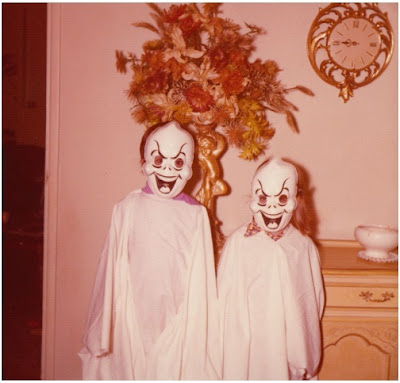



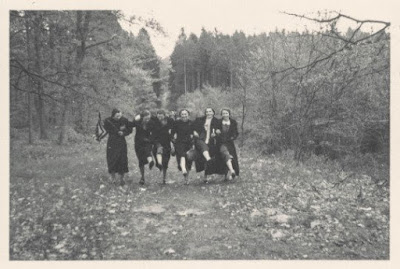
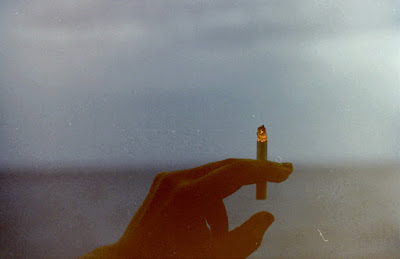
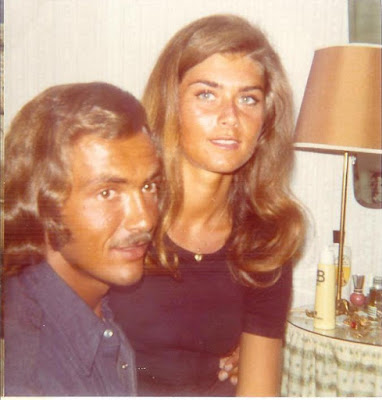
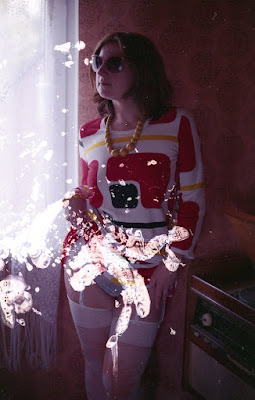










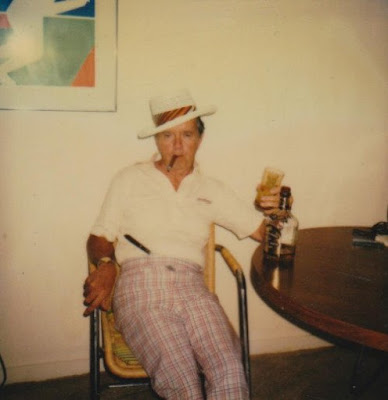



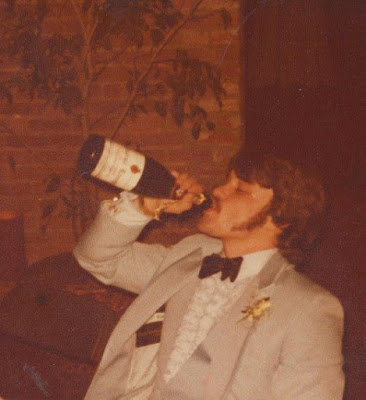





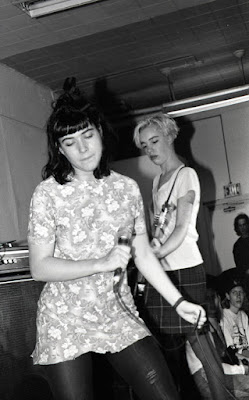

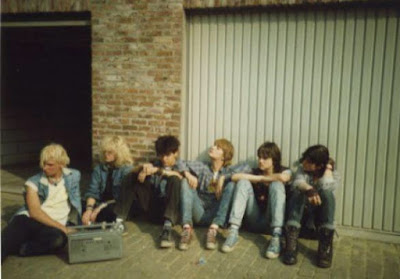
















































































 Now available in North America
Now available in North America 